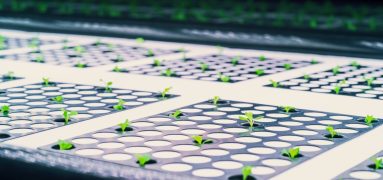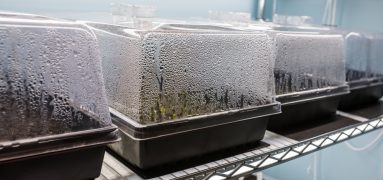Light Pollution and Commercial Greenhouses

Addressing and combatting greenhouses’ role in polluting the night sky
Growers often pay close attention to how their operation affects the environment by keeping track of any chemicals they use, their energy emission, their water consumption, ect.
But there’s another type of pollution that escapes many people’s attention: light pollution.
What is light pollution?
Light pollution occurs when artificially made light alters the natural outdoor light emitted from the sky. Artificial lights, such as lights in/on buildings, streetlights, advertisements, factories, and sports venues make the sky brighter and consequently makes the stars less visible.
Another big source of light pollution: Greenhouses. Think about how many lights it takes to power a greenhouse growing operation. Greenhouse lights are essentially mimicking the sun, after all!
According to DarkSky, commercial greenhouses are one of the biggest polluters of the night sky—even more than entire towns!
What are the impacts of light pollution?
Light pollution is detrimental to the circadian rhythms of humans, plants, and animals. Living things are biologically accustomed to a 12-hour dark/12-hour light cycle that comes along with the natural rising and setting of the sun. However, with light pollution, the night sky is much brighter than it is naturally. This impacts our circadian rhythms and our abilities to sleep, which negatively affects our health.
Another negative impact of light pollution is that it hinders our ability to produce melatonin. An imbalance of melatonin can also cause negative health effects, and can even lead to cancer.
Light pollution harms nocturnal animals, as the night is much less dark than animals are biologically accustomed to. This can prevent them from hunting, breeding, and migrating.
One example of light pollution harming animals is how it impacts baby sea turtles’ ability to hatch and make it to the water. Instead of following the light of the moon, which leads the baby turtles to the ocean, they may follow the artificial light emitted from cities.
What can greenhouse growers do to combat their light emissions?
The most effective way for greenhouses to mitigate their light pollution is to utilize blackout curtains on the walls and roof. The best solution would be to simply turn the lights off at night, but that isn't always possible for growing operations. Instead, growers can focus on preventing light from escaping into the night sky.
Using blackout curtains may even benefit the plants within the greenhouse, as light bouncing off the walls and ceiling can increase lighting quality. Curtains will also keep in heat and regulate temperature, so using them could mean reduced temperature control costs.
Another solution could be to produce supplemental light during dusk and dawn, when the sky has a bit of natural sunlight anyway. That way, the light emission would occur at a time when the impacts would be minimal because there is already a bit of sunlight in the sky.
More and more local governments, particularly in Canada, are implementing laws and regulations that aim to reduce light pollution.
A greenhouse is a finely tuned machine, with multiple systems working together to create the perfect environment. This includes lighting, as well as temperature, humidity, and other systems. TC Control Group’s expert growers and engineers can help you control your growing environment with precision and environmental efficiency.



